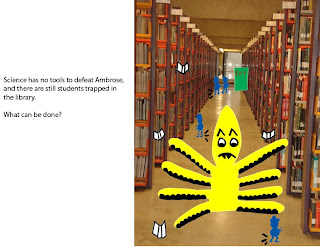 |
| Bata Shoe Museum 327 Bloor Street West |
On Tuesday April 30th, I volunteered for a Western University
alumni event at the Bata
Shoe Museum
The women arrived donning fabulous footwear. And the men
came accompanying the women. After a tour of the museum and drinks the lecture
began. The chairs were filled as everyone took a seat with a little sigh of
relief from their feet – the consequence of our footwear choices. However, we
were soon to find out that our decision of style over comfort is something that
many women throughout history share.
Professor Olson notes that the history of footwear can be
seen and understood from several viewpoints; such as economic and social. The
seminar focused on footwear as a “social erotic object” for wearer and observer.
With the title being Sex
and Shoes you can probably guess that the lecture focused on the history of
the high heel –your Uggs for Weldon didn’t make the list. The wedge shoe goes
back to ancient Greece
| Chopines |
During the Italian Renaissance platform shoes became popular
among wealthy women. Wealthy women wore chopines
to make them appear taller and to suit the style of skirts. Yet, chopines were
originally part of lower class fashions. In 14th century Florence
| King Louis XIV in red heels |
One remark I found greatly interesting was the fact that
Historians do not know where the heel originated from. Nonetheless, by 1650
both men and women wore stack heels. King Louis XIV wore red heels, and only those a part of the French court
were allowed to wear red heels. (Christian Louboutin exhibit coming to the
Design Exchange this summer, I plan on learning if this is where he got the idea
from.)
| Pointed heel = sharpened fantasies |
Throughout the 19th
century young women used heels to define themselves against previous
generations by adopting the footwear associated with prostitutes. A major trend
in the 19th century was the continuous thinning of the heel, leading
to the creation of the stiletto in the late 1940s. An interesting point was the
correlation between the steel industry and the stiletto. A steel heel was
needed to support the longer and thinner heel. From the 1980s to present times,
heels have a place as an erotic symbol due to their current status as a part of
lingerie.
The high heel seems to be a lasting fashion staple for women
representing femininity and sexual desire. A common material object, that has
created a not so simple mark on women’s history.
Some photos from the Bata Shoe Museum exhibit.
 Baroque |
| India- Paduka |














